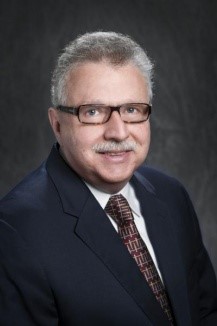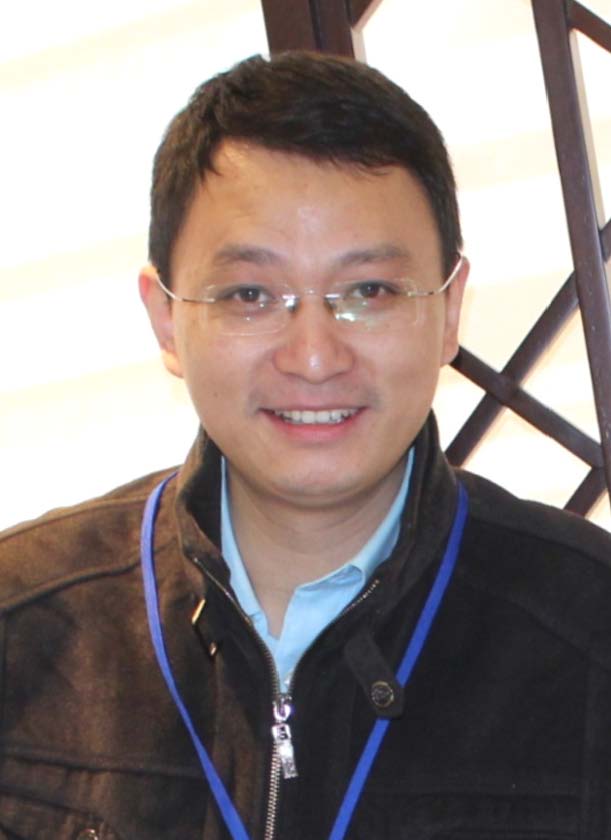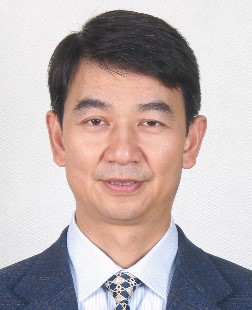 |
Prof. J. Woody Ju - University of California at Los Angeles, USA
PhD from the University of California at Berkeley in Structural Mechanics (1986). Currently distinguished Professor at UCLA and at Tongji University. Editor of the Int. J. of Damage Mechanics, Editor of the J. of Composites, Associate Editor of the J. of Nanomechanics and Micromechanics, and Editorial Board Member of the ActaMechanica. Fellow ASME, Fellow ASCE, Fellow ACI, Fellow USACM, Fellow IACM.
|
|
TITLE:INNOVATIVE THERMO-ELASTOVISCOPLASTIC DAMAGE-HEALING MODEL FOR BITUMINOUS COMPOSITES
ABSTRACT: Innovative strain energy based thermo-elastoviscoplastic damage-self healing formulations for bituminous pavement materials are presented for numerical simulations of experimental data. A class of elastoviscoplastic two-parameter constitutive damage-self healing models, based on a continuum thermodynamic framework, is developed within an initial elastic strain energy based formulation. An Arrhenius-type temperature term is uncoupled with the Helmholtz free energy potential to account for the effect of temperature. The governing incremental damage and healing evolutions are coupled in volumetric and deviatoric parts and characterized through the net stress concept. New computational algorithms are systematically proposed, based on the two-step operator splitting methodology. Comparisons with experimental measurements and model predictions are demonstrated.
 |
Prof. Gilles PIJAUDIER-CABOT- Université de Pau et des Pays de l'Adour, France
PhD from Northwestern University (1987). Currently vice-president of the National Commission for the evaluation of research on radioactive wastes. Prof. Gilles Pijaudier-Cabot authored over 120 refereed papers which received over 4000 citations (h=32). He participated to 4 European projects, acted as principal investigator of over 15 industrial collaborations, and received an advanced grant from the European Research Council in 2008.
|
|
TITLE: CONTINUUM DAMAGE IN QUASI-BRITTLE MATERIALS: A REVIEW OF RECENT RESULTS OBTAINED WITH THE HELP OF LATTICE MODELS
ABSTRACT: The degradation of quasi-brittle materials encompasses micro-cracks propagation and interactions, and finally coalescence in order to form a macro-crack. These phenomena are located within the so-called Fracture Process Zone (FPZ). This process has been properly described with the help of nonlocal continuum damage formulations for several decades. Issues such as the size and shape effects on fracture that have been observed experimentally could be captured with the help of such formulations. On the other side, some unresolved issues remained, such as incorrect damage initiation conditions or boundary effects. The initial formulation in which the internal length was considered to be a constant material property has been enhanced over the years in order to address such issues. Most of these proposals, however, consisted into ad-hoc phenomenological adjustments that could not be motivated by rational arguments.
This presentation aims at providing a further insight on the evolution of the correlation between damage events, or the internal length in a continuum setting, with the help of statistical analysis in lattice models that mimic the continuum response in a discrete way. These mesoscale models have been found to be much more effective than standard nonlocal models for the prediction of size and shape effects. The statistical analysis relies on the implementation of Ripley's functions, which have been developed in order to exhibit patterns in image analyses. It is shown how a correlation length may be extracted from the Ripley's function analysis. Comparisons between experimental (acoustic emission results) and numerical evolutions of extracted correlation lengths are performed and the evolution of the internal length in the continuum model is obtained.
The lecture is concluded by an illustrating example of the capabilities of the lattice model dealing with hydraulic fracturing. For this, the action of the fluid pressure on the skeleton is described by Biot's theory. Fluid flow in a lattice dual to the mechanical one is represented by considering Poiseuille's flow. The numerical model is compared to existing analytical solutions. Then, the influence of a natural joint of finite length crossed by the fracture is shown.
|
 |
Prof. K. Saanouni - University of Technology of Troyes, France
PhD from University of Technology of Compiègne (France) in Solid and Structural Mechanics (1988). Currently distinguished Professor of solid and structural mechanics at the University of Technology of Troyes. Member of editorial board of 2 international journals: IJDM and IJFO, and member of organizing committee of more than 40 scientific events.
|
|
TITLE:Fully coupled constitutive equations in the framework of generalized continua for metal forming simulation
ABSTRACT: Nowadays, it is well established that when subjected to various loading paths, materials may exhibit severe strain localization inside narrow bands. One or more of these localization zones may lead to initiation and evolution of different kinds of damage and even can transform to propagating macroscopic cracks. This damage occurrence influences strongly the material behavior inside the localization zones and interacts deeply with the different involved physical phenomena (inelastic flow, hardening …) modifying severely the distribution of the mechanical fields. This talk is dedicated to the formulation of advanced fully coupled constitutive equations in the framework of generalized micromorphic continua based on the first gradient of some selected state variables. The associated numerical aspects will be briefly discussed and some applications to metal forming by large plastic strain will be shown.
|
 |
Prof. George Z. Voyiadjis- University of Louisiana State University, USA
PhD from University of Columbia University (USA) in Engineering Mechanics (1973). Currently the chair and the Boyd Professor of the Department of Civil and Environmental Engineering at Louisiana State University. The Chief Editor of the Journal of Nanomechanics and Micromechanics of the ASCE.Fellow ASME, Fellow ASCE, Fellow AAM.
|
|
TITLE: Fundamental Issues in Continuum Damage and Healing Mechanics
ABSTRACT: Certain fundamental issues are discussed in continuum damage and healing mechanics including introducing some new concepts. The new concepts of damageability and integrity of materials are introduced. This is followed by introducing what is called the integrity field and the healing field. These issues are abstractions at the moment but their practical applications will become clear in the future. In addition, a new exponential damage variable in introduced. Finally, the healing process is dissected into several stages that are examined. It is hoped that these new fundamental concepts will open the way for new and innovative research in damage and healing mechanics in the future.
|

|
Prof. Jian-Ying Wu – South China University of Technology, China
PhD from Tongji University (China) in Structural Engineering (2004). Currently Professor at South China University of Technology (China). Awardee of Excellent Youth of the National Natural Science Foundation of China (2012); Winner of the National Natural Science Award of China (2016).
|
|
TITLE: A unified phase-field/gradient-damage theory for the modeling of failure in solids
ABSTRACT: Damage and fracture mechanics are two paradigms developed to deal with cracks induced failure in solids and structures through distinct methodologies. Aiming to bridge the in-between gap, we address a unified phase-field/gradient-damage theory for both brittle fracture and quasi-brittle failure under quasi-static and dynamic loading scenarios. Either calculus of variation or irreversible thermodynamics is sufficient to formulate the model, without introducing other ad hoc assumptions. For the first time the energetic equivalence between fracture and damage mechanics is established, resulting in a length-scale insensitive and discretization objective material model. Numerical aspects and benchmark validation are also presented in this lecture.
|
|
|

